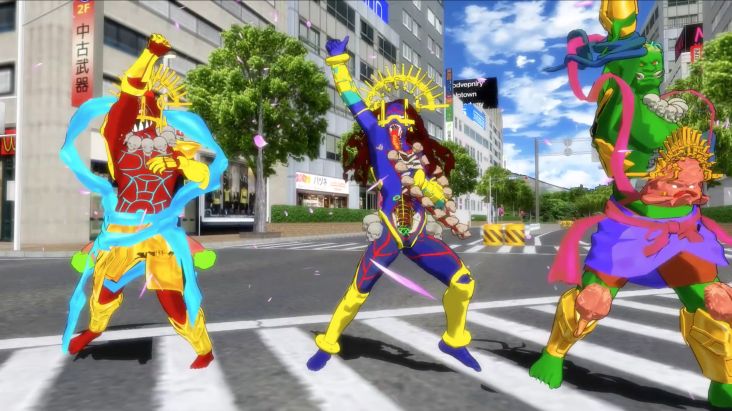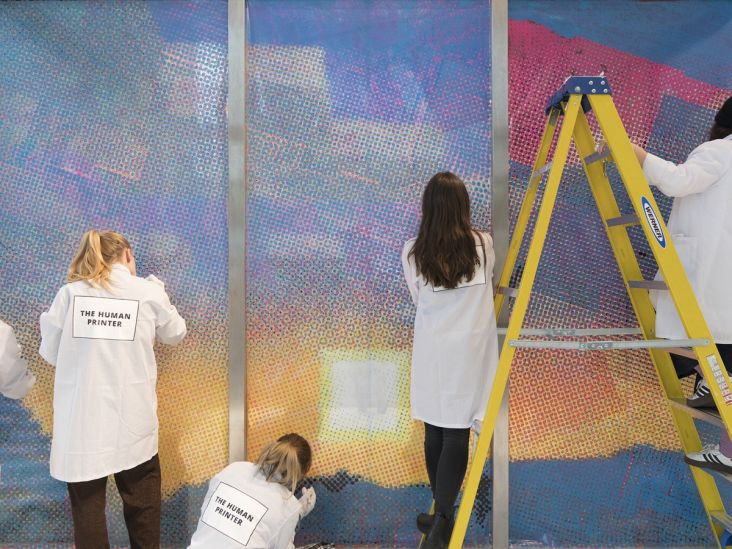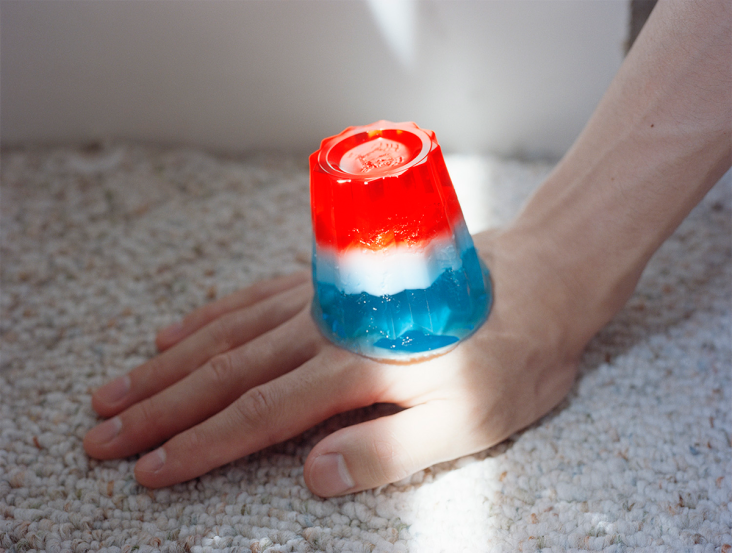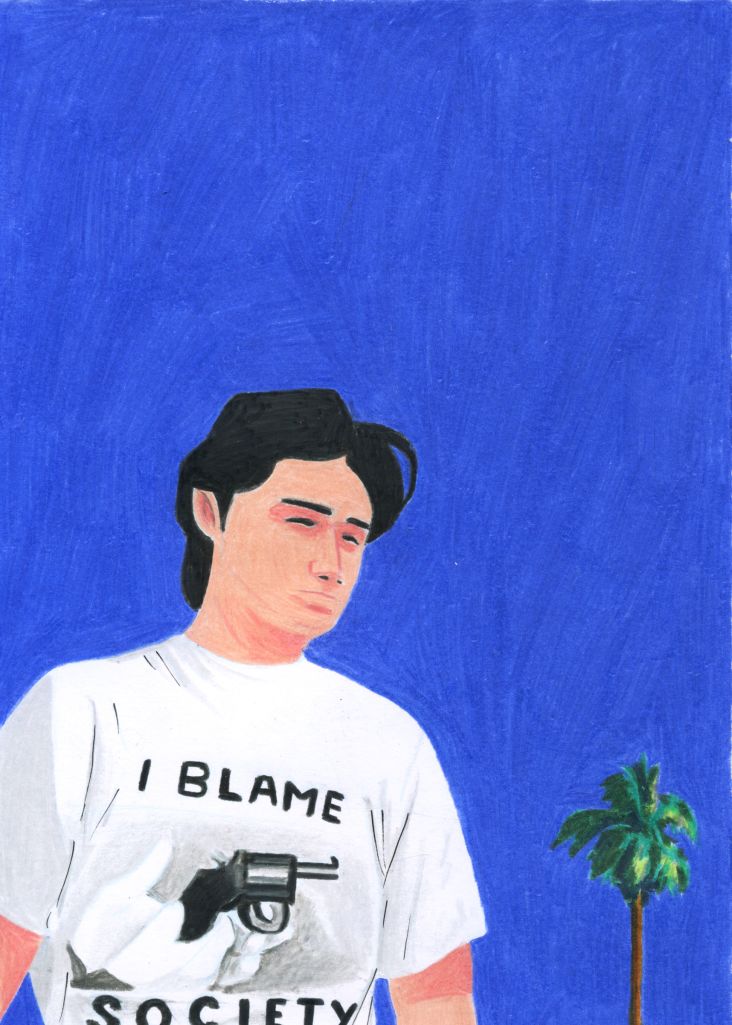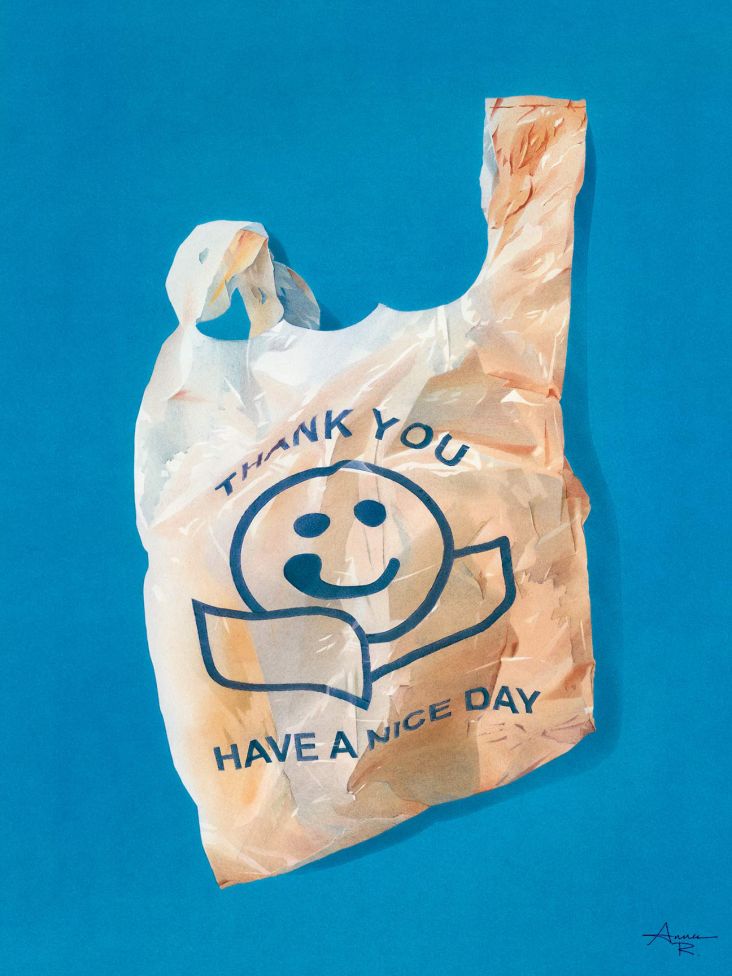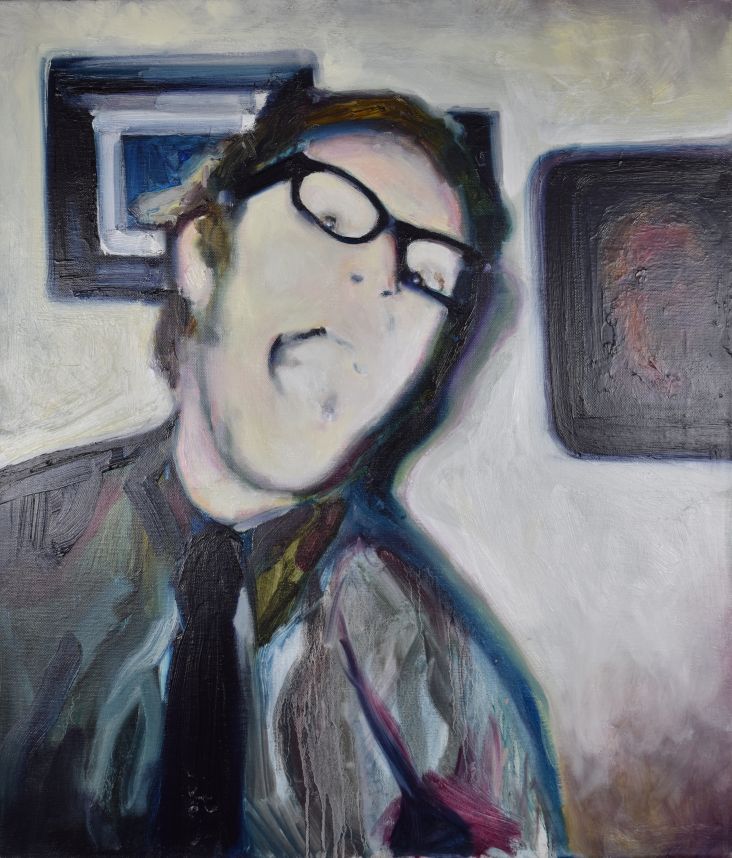Paul Woods on being kind, sustainable working and encouraging a "non-a**hole" culture in the creative industries
Given the age of information we live in, it’s increasingly difficult to hide bad culture in the workplace, creative industry or otherwise. The ubiquity of social media along with increased transparency on sites Glassdoor means that the importance of a "non-a**hole" culture is finally starting to take root in the mainstream (if for no reason other than it being bad for business).
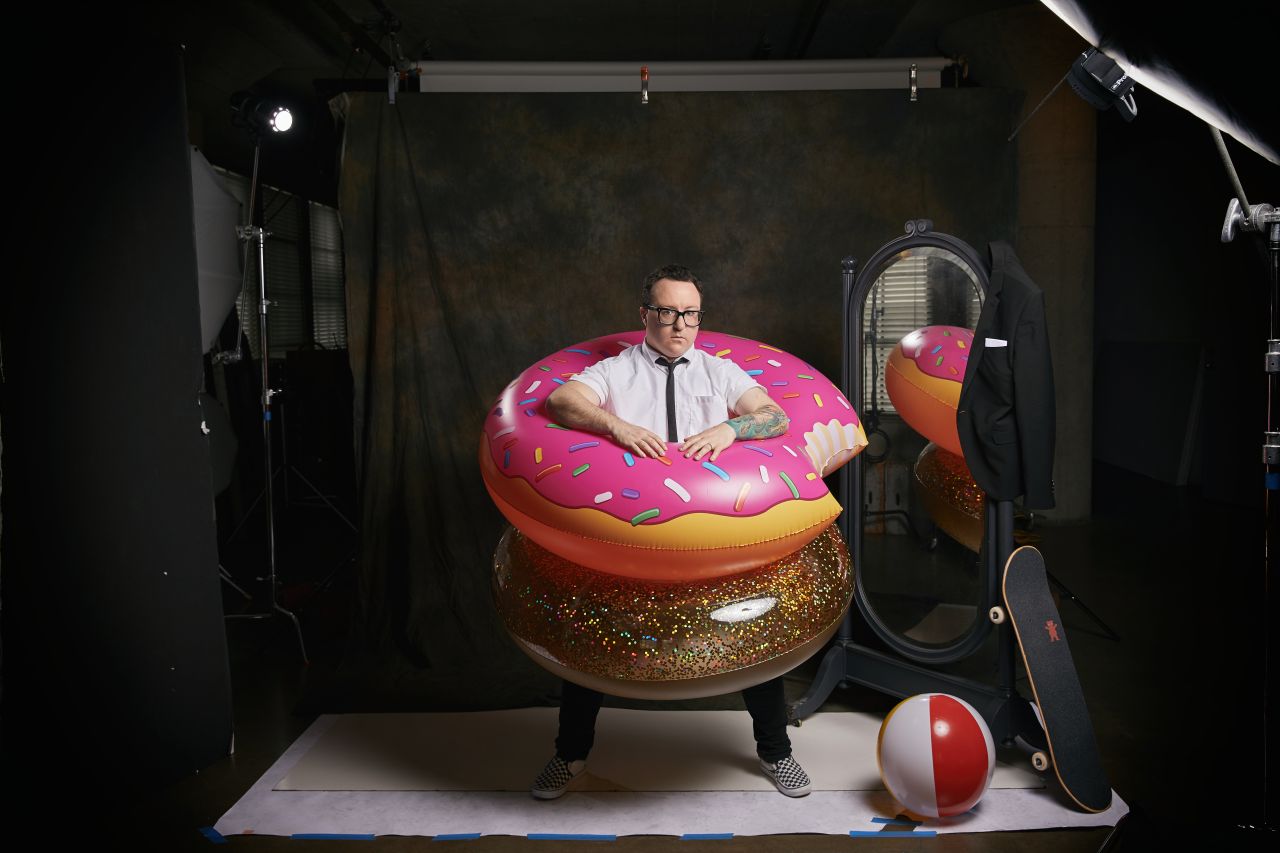
As a result, there are increasing reports of 'toxic culture’ in the press which needs to be addressed. Enter Paul Woods, award-winning designer, writer, illustrator and CCO of Edenspiekermann’s creative and technology teams. During his 15 years as a designer, Paul has been at the helm of projects for companies like Red Bull, Google and Morgan Stanley. In his spare time, he's the co-founder of the satirical industry website Adloids.
He's also the author of the new book, How to do Great Work without being an A**hole where he writes about how, as a senior member of any team, what you can do to be kinder to your staff, such as the importance of paying your interns and learning their names, crediting the right people for good work, the destructive nature of setting tight deadlines and holding too many long-winded meetings.
The book also gives juniors advice on what they should expect and why they should not stand for with unpaid work or a lack of respect in the workplace. We spoke to Paul about this and more.
Despite lots of encouraging progress, there’s clearly still a lot of bad culture in the workplace isn’t there?
Let’s be clear, there has been a tremendous amount of progress over the past years when it comes to creative culture. But of course, old habits die hard and change comes slowly. There are plenty of people I know in the industry that still subscribe to the "always on" culture that burns out talent, especially in the agency world.
How have they gotten away with it for so long?
Two things: First, to a creative person, the need to make things is more addictive than hard drugs. Creative people find it almost impossible to stop themselves when they are in flow, and therefore are naturally prone to burnout, especially early in their career when they want to prove themselves.
The second reason is that in the past, there were simply fewer options for talent. In most cases, agency life was the only game in town if you wanted a career in design or advertising. Therefore, certain practices, like all-nighters, weekend pitches, etc., just became taken for granted if you wanted a career in the industry. It was the norm and wasn’t questioned. Of course now, with the shift towards in-sourcing this work and the rise of design at the tech companies, talent has a huge range of options outside of an agency.
What’s the biggest message you want to hit home with your new book?
The most important first step is to acknowledge the importance of culture and sustainable working. It’s not just about being nice for the sake of being nice: the best talent has more options than ever. It doesn’t matter if you are a picture of moral purity or a modern-day Ebenezer Scrooge, you need to get your shit together and create a great environment for people to work in. Otherwise, they will leave.
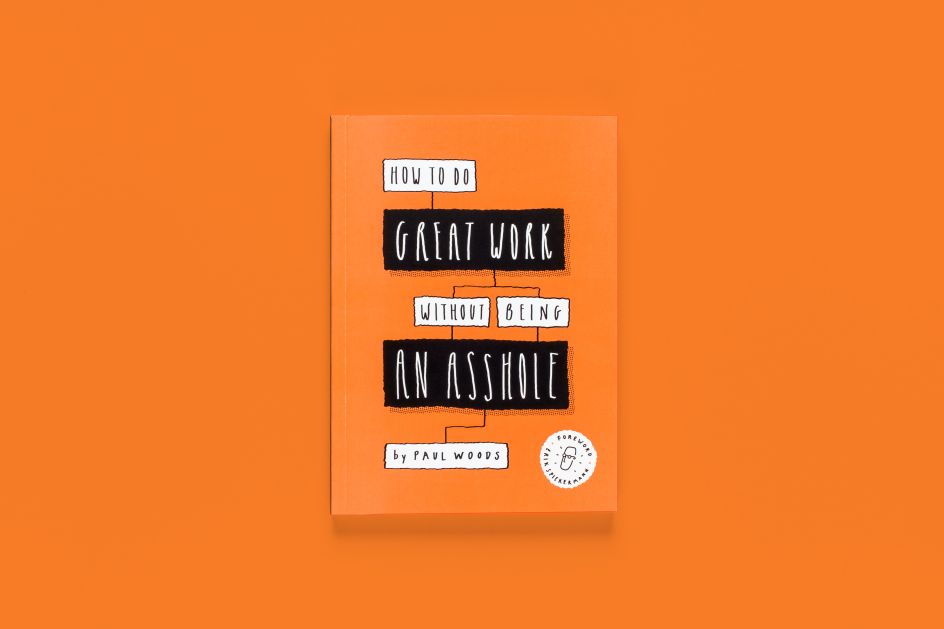
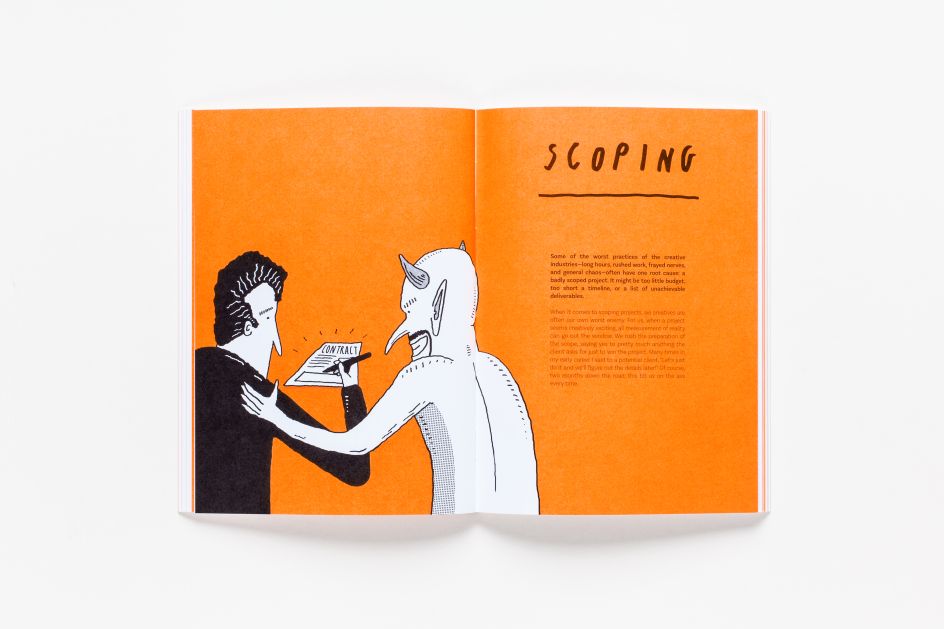
What spurred on the book? Was there any particular moment?
The idea for the book came about after a discussion with a friend about the necessity of long hours in the creative industry. Their opinion was that long hours were needed to produce great work, my point of view was that it was just mismanagement of time.
I had always worked at companies that managed to produce great work in a sustainable way, so their opinion made no sense to me. And so, I decided that I needed to write down some common sense tips I’d picked up while working at Edenspiekermann (our founder Erik is a big proponent of sustainable working) and at HUGE (also a great place for creative culture).
What would you say to leaders out there, thinking of improving culture?
No matter how good your intentions, culture is a rollercoaster with natural ups and downs. It’s not a zero-sum game — it’s natural in business to have ebbs and flows. People leave. A project takes an unexpected turn and people end up having to work late to get it done on time. A business downturn means you have to lay people off. Shit happens. But what’s most important to keep in mind is that good culture is a mindset, not a single activity or moment in time. The most important step for a leader is establishing culture as a priority for their team or company in the first place.
There’s nowhere to hide anymore, not with social media, so why do you think workplaces continue to be toxic?
I’m really not sure there’s a good reason, other than old habits die hard. As you said, there is no place to hide, I mean, just look at Glassdoor. I really hope in five years no one has to read How To Do Great Work Without Being An Asshole because "bad culture" in the creative industry is a thing of the past.
Can you give us any examples of where you’ve seen positive change?
Actually, I think the focus the tech companies put on culture has been really important (even if I think that the nap pods and on-staff chefs are a bit silly). The highly visible nature of what they provide for their employees has definitely raised expectations of talent. In almost every interview we do with candidates now, I get asked the question, “What’s your culture like?”
What do you do well at Edenspiekermann?
Our Berlin headquarters really enforces sustainable working practices. The office literally locks their doors at 6.30PM every day and there is a person who walks around kicking people out (a bit like a bar at last orders). Unless you are in upper management with a key and the alarm codes, you need to leave.
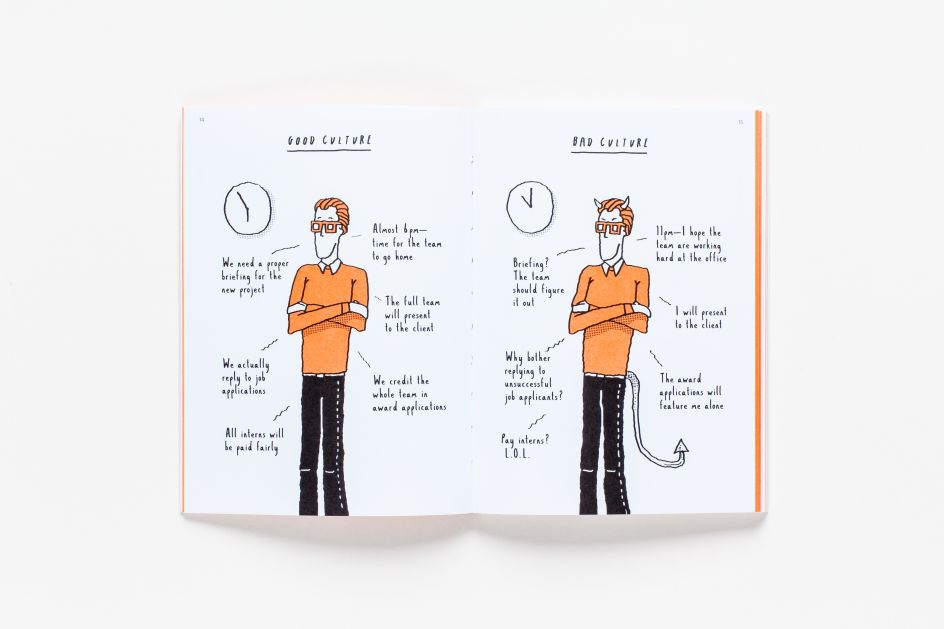
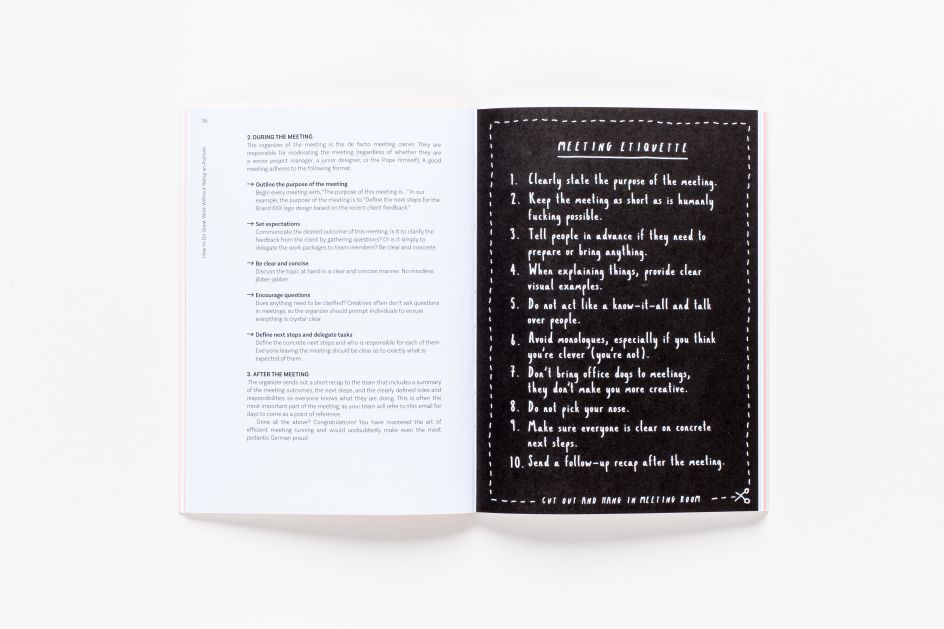
And what could you improve on?
Specifically here in our Edenspiekermann Los Angeles office, we are a smaller agency and quite new. Therefore, we have fewer people, and we’re still building up our repertoire of clients. With a smaller team setup, the risk of people being overworked is a real challenge, and we always have to pay extra attention to this in resource meetings and project planning.
We love that the book includes advice for juniors on what to expect in the workplace. Can you summarise a few tips?
Ask questions, there is always something you don’t understand. Read the brief three times. And please, take notes. In a notebook. With a pen.
Where did you start your career? How have things changed since then? For good or bad?
Like most of us, I’ve made just about every mistake that I’ve warned against in my book, especially early in my career (a lot of the cartoons in the book are actually self-reflective!).
However, I have been incredibly lucky during my career to have worked at places that really value culture and sustainable working—Edenspiekermann and HUGE. They both put a lot of emphasis on normal working hours and the importance of being nice. Working at these places had a big influence on me and made me ask, “if these companies can make great work while still being nice, why can’t everyone?”
We love the tongue-in-cheek Adloids. Do you think the creative industries are guilty of taking themselves too seriously?
Absolutely. It drives me crazy when I hear a lot of talk about changing the world and other BS like that. Kevin (co-founder of Adloids) and I set about making fun of the ridiculousness that sometimes happens when people are driven to distraction in the name of creating great work.
Finally, what one thing can we all do today to encourage a more positive working culture?
Take a step back. You are not a brain surgeon or a rocket scientist. You are helping someone sell a can of fizzy water, toilet paper or haemorrhoid cream. It’s only advertising, nobody dies. Take a fucking vacation.
How To Do Great Work Without Being An Asshole by Paul Woods is published by Laurence King on 11 March 2019. Available at www.laurenceking.com.




 by Tüpokompanii](https://www.creativeboom.com/upload/articles/58/58684538770fb5b428dc1882f7a732f153500153_732.jpg)


 using <a href="https://www.ohnotype.co/fonts/obviously" target="_blank">Obviously</a> by Oh No Type Co., Art Director, Brand & Creative—Spotify](https://www.creativeboom.com/upload/articles/6e/6ed31eddc26fa563f213fc76d6993dab9231ffe4_732.jpg)








